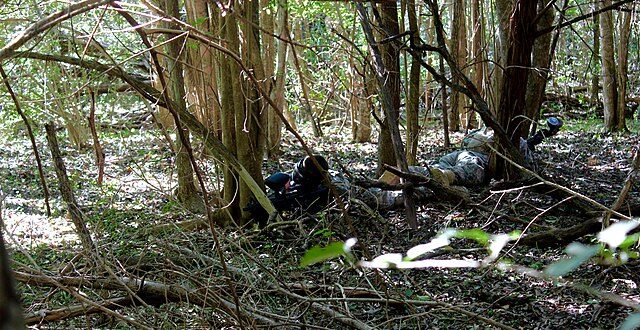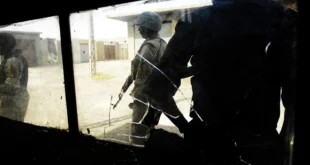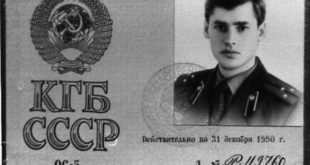by Aleksander Palikot and Sam Skove, RFE/RL
KHARKIV, Ukraine — Tamara Halishnikova doesn’t remember how long the attack targeting her and other residents trying to escape the Russian-occupied village of Kurylivka lasted.
All she remembers are the sounds that rang out as the column of vehicles made its way along a railway embankment that late-September morning.
“There was an explosion, then automatic-weapons fire, then more explosions, then we went to the embankment, then gunfire, gunfire, gunfire,” she said, speaking at a press conference to RFE/RL at a hospital in Kharkiv less than two weeks later.
Halishnikova and her daughter, Lyudmyla Potapova, were among seven survivors of a September 25 attack on the vehicles, which carried 31 people attempting to flee fighting in Russian-held territory in northeastern Ukraine. Among the dead were 13 children, a pregnant woman, and Halishnikova’s husband.
The attack was first reported by Ukrainian authorities on September 30, five days after it occurred.
While three survivors interviewed by RFE/RL could not identify the attackers, the assault on civilians falls into a pattern of Russian forces targeting civilian columns, as occurred in missile and artillery attacks near Zaporizhzhya on September 30 that killed 30 people, on April 8 in the Donetsk region city of Kramatorsk, and on March 6 in Irpin, outside Kyiv.
The Ukrainian Security Service (SBU) has stated that the attackers were a Russian special forces group. The Prosecutor-General’s Office has said that it has opened a war crimes investigation into the matter.
Survivors said the column of seven vehicles was being attacked with machine guns in an ambush.
The village lies near the small city of Kupyansk, which fell to Russian forces on February 27, just three days into the invasion. The area was under Russian occupation for more than six months, until a stunning Ukrainian counteroffensive in the Kharkiv region liberated much of Kupyansk and the surrounding district.
According to Halishnikova, Potapova, and Mykola Bondarenko, a 66-year-old man who was trying to get his adult son out of danger, residents of Kurylivka decided to leave amid exchanges of shellfire between Russian and Ukrainian forces. A local man told them about the route and assured them of its safety, charging each of them 6,000 hyrvnyas ($162) — a significant sum for people impoverished after months of occupation and war.
In the fog of war, residents chose what seemed to be the most sensible course of action: rather than attempt to cross into Ukrainian-held territory in the Kharkiv region, the group planned to travel into Russia. And they believed the route to be safe.
They were wrong: As the convoy of seven vehicles rolled down a road parallel to the railroad tracks, an explosion ripped through the first car without warning. Then gunfire erupted from the thick undergrowth next to the tracks.
In the stricken first car, Bondarenko saw his son’s head slammed into the steering wheel, his body hit by gunfire. He was dead.
Those who were capable jumped out of their vehicles when the firing died down and took cover by the raised turf of the railway embankment. Lying still, they said, they heard a vehicle moving, which they presumed to be looking for them. Taking their chances, they then darted across a field near the tracks.
The attackers continued to fire at them, and Bondarenko described the attackers firing rocket-propelled grenades into the woods in what he believed was an attempt to cut them off. “We had the feeling they were following us,” Halishnikova added.
Photos published by the governor and the Prosecutor-General’s Office show cars pockmarked with bullet holes, many pulled to the right in a vain attempt to avoid the barrages. Some pictures taken at the site after the attack appear to show cars with relatively few bullet holes, possibly pointing to the soldiers aiming carefully at the civilians inside.
None of the three survivors interviewed by RFE/RL could say for certain whether their assailants were Ukrainian or Russian. However, they believe the attackers would have been able to clearly see that many of the occupants of the cars were women and children.
The man who arranged the convoy, Bondarenko said, was found shot to death soon after the attack, although it’s unclear by whom. “My guess is that it was the relatives of these dead people,” he said.
Potapova’s dog, a Pomeranian, was soaked in blood but survived the attack, and she said that brought a small measure of comfort as they mourn the deaths of her father and the other victims.
“He helps distract me and my mom now a little bit,” she said.
 Soldier of Fortune Magazine The Journal of Professional Adventurers
Soldier of Fortune Magazine The Journal of Professional Adventurers






